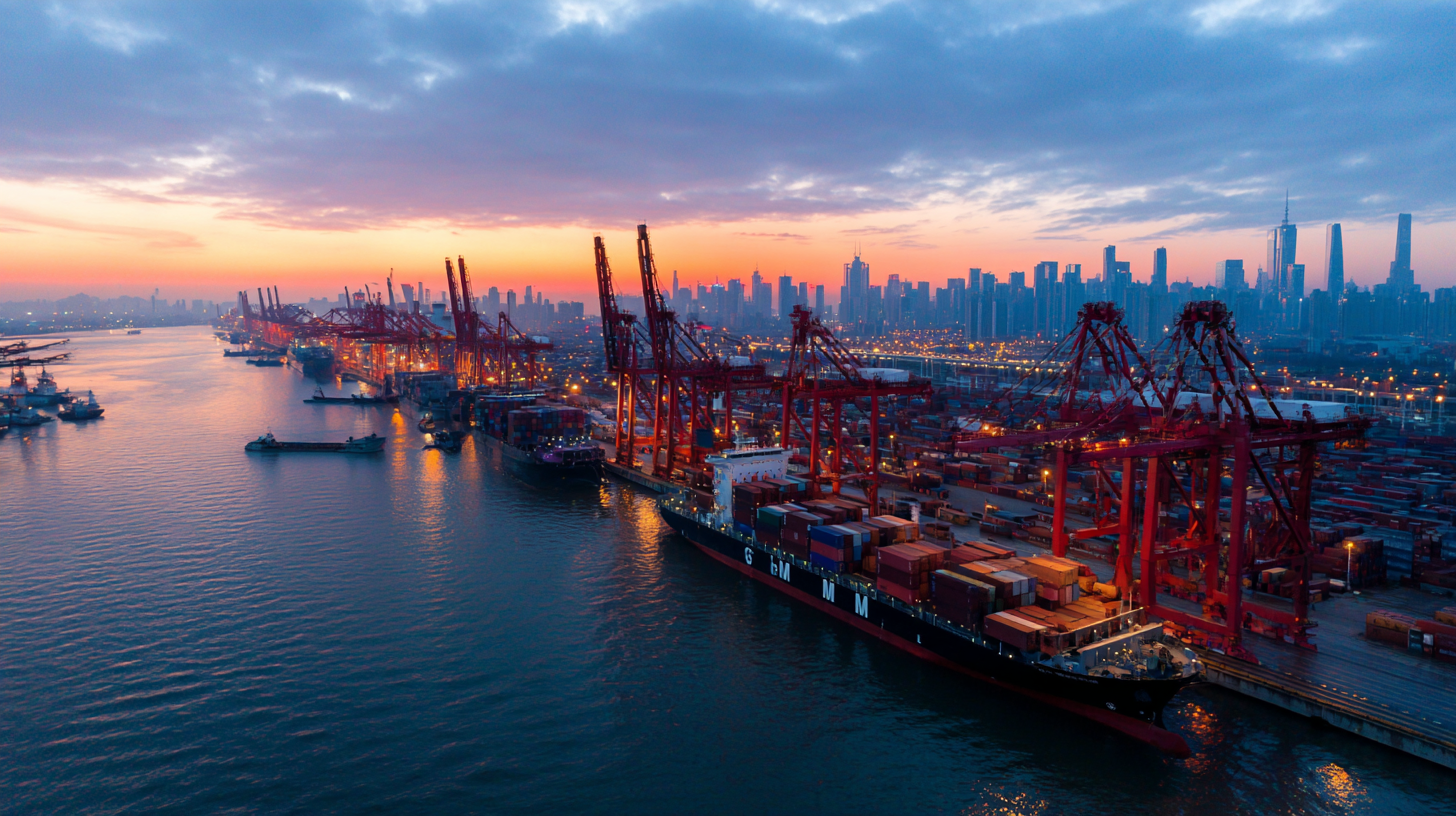

In recent years, the narrative surrounding products manufactured in China has evolved dramatically, with an increasing emphasis on quality and innovation. As we look towards 2025, the landscape of global suppliers is shifting, with Chinese manufacturers earning respect on the world stage for their commitment to excellence. This blog will explore the market dynamics influencing China's manufacturing sector, highlighting key trends and examples that illustrate the rise of Chinese suppliers as leaders in quality.

From advanced technologies to rigorous standards, these suppliers are not only meeting international requirements but are also setting new benchmarks for excellence. Join us as we delve into the market analysis of 2025, revealing how Chinese suppliers are transforming perceptions and contributing to a more competitive global supply chain.
The landscape of global manufacturing is undergoing a remarkable transformation, with Chinese manufacturers leading the charge toward the pinnacle of quality and innovation. By 2025, the narrative surrounding “Made in China” is expected to shift significantly from cost-effective production to an emphasis on superior craftsmanship and technological advancement. This evolution is driven by a growing emphasis on research and development, as Chinese firms aim to not just meet but exceed international quality standards.

One key factor contributing to this trend is the collaboration between Chinese manufacturers and global suppliers, which facilitates the exchange of best practices and cutting-edge technologies. Companies are increasingly investing in smart manufacturing and automation, thereby enhancing efficiency and reducing production costs without sacrificing quality. This strategic pivot not only fortifies China's position as a dominant manufacturing hub but also earns it respect on the world stage as businesses look to procure high-quality products. As a result, by 2025, we can anticipate that Chinese-made goods will be synonymous with reliability and excellence, fundamentally reshaping global supply chains.
Chinese suppliers are increasingly setting themselves apart in the global market through stringent quality standards and innovation. As global demand for high-quality products grows, top Chinese manufacturers are elevating their production processes to meet international expectations. This commitment to quality is evident across various sectors, from electronics to textiles, helping to shift global perceptions and build respect for products made in China.
Key quality standards play a crucial role in distinguishing leading suppliers. These include adherence to international certifications, continuous improvement in production techniques, and a focus on customer feedback. The rise of innovative practices within Chinese companies, supported by enhanced educational frameworks, has further solidified their status as reliable partners in the global supply chain.
 With platforms now facilitating connections between businesses and verified suppliers, sourcing products from China is becoming more accessible and dependable, ensuring that only the best reach international markets.
With platforms now facilitating connections between businesses and verified suppliers, sourcing products from China is becoming more accessible and dependable, ensuring that only the best reach international markets.
In today's dynamic global marketplace, companies are navigating the complexities of supply chain management amidst rising geopolitical risks and macroeconomic uncertainties. As highlighted in a recent report, 70% of supply chain leaders are prioritizing resilience strategies, enabling them to adapt swiftly to disruptions.
Partnerships are essential in this landscape; businesses that foster collaboration with best suppliers not only enhance their operational efficiency but also mitigate risks associated with forced labor and sustainability compliance. A growing number of firms are recognizing the critical need to integrate sustainable practices across their supply chains to meet regulatory standards and consumer demands.
Effective procurement strategies are vital to overcoming the intricate challenges faced in today's supply chains. The rise of complex procurement practices involves addressing issues such as fluctuating tariffs and inconsistent regulatory environments. Companies that employ sophisticated procurement frameworks can drive cost savings while managing supply chain reliability.
By leveraging insights from industry surveys, it is evident that organizations implementing robust supplier partnerships are better positioned to weather market turbulence, ultimately positioning "Manufactured in China" as a quality contender on the global stage.
China has long been seen as the world's factory, but the emphasis on quality and innovation has shifted the narrative. Innovative technologies are playing a crucial role in driving manufacturing excellence across the nation. The integration of artificial intelligence, automation, and advanced materials into production processes has significantly enhanced efficiency and product quality. Companies utilizing these technologies are not only meeting international standards but often surpassing them, leading to a growing recognition of Chinese brands on the global stage.
Moreover, the rise of smart manufacturing has paved the way for more sustainable practices in the industry. With a focus on reducing waste and optimizing resource use, Chinese manufacturers are increasingly adopting green technologies. This commitment to sustainability not only appeals to environmentally conscious consumers but also positions Chinese suppliers as leaders in the global market. As these trends continue, the phrase "Made in China" is transforming from a label of mass production to a symbol of high quality and innovation, earning respect and admiration across borders.
In recent years, Chinese manufacturers have made significant strides in building a global brand that garners respect and recognition. Historically known for cost-effective production, these suppliers are now focusing on quality, innovation, and sustainability, transforming their global image. By investing in advanced technologies and adhering to international standards, they are not only enhancing their product offerings but also demonstrating their commitment to meeting the demands of discerning global consumers.
A crucial part of this transformation is the emphasis on collaboration and partnerships with international brands. Chinese suppliers are increasingly engaged in extensive research and development, leading to tailored solutions that cater to diverse market needs. Furthermore, the rise of e-commerce has enabled these suppliers to showcase their products directly to a global audience, allowing them to build credibility and brand loyalty. As a result, they are not just seen as manufacturers but as valuable partners in the global supply chain, earning respect and admiration from industry leaders and consumers alike.
| Supplier Category | Quality Rating (1-5) | Average Delivery Time (Days) | Export Regions | Certifications |
|---|---|---|---|---|
| Electronics | 4.7 | 15 | North America, Europe, Asia | ISO 9001, CE, RoHS |
| Textiles | 4.5 | 20 | North America, Europe, Australia | ISO 14001, Oeko-Tex |
| Machinery | 4.8 | 30 | Europe, Asia, South America | ISO 9001, CE |
| Consumer Goods | 4.6 | 10 | North America, Europe, Asia | ISO 9001, BSCI |
| Automotive Parts | 4.9 | 25 | Global | ISO/TS 16949, IATF 16949 |